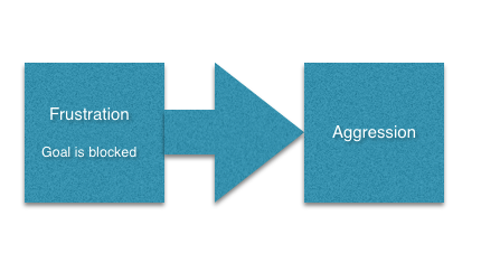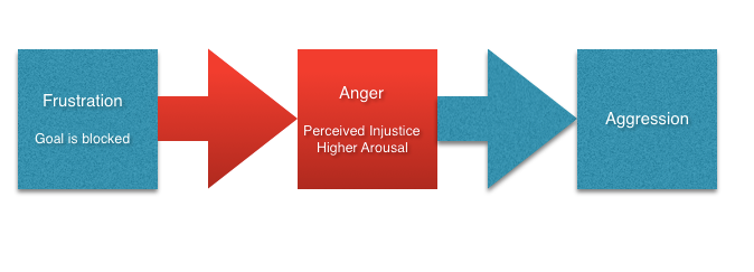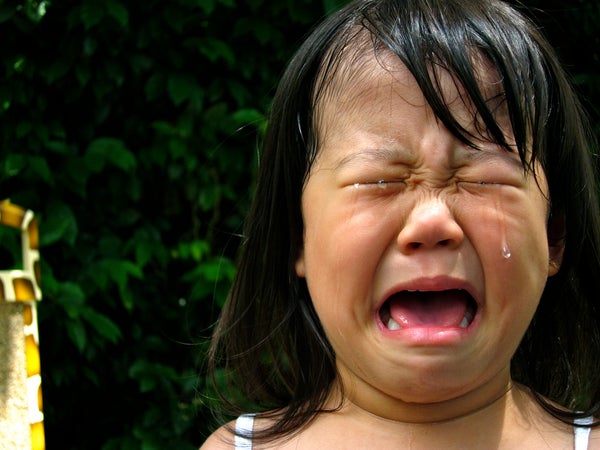This article was published in Scientific American’s former blog network and reflects the views of the author, not necessarily those of Scientific American
Now that Halloween's over, it's time to enjoy the next best thing about the first week of November (second only, of course, to the post-holiday half-priced bulk candy) -- the newest annual Jimmy Kimmel video montage, featuring parents filming what happens when they tell their kids that they ate all of their Halloween candy.
Here's this year's version, released yesterday:
On supporting science journalism
If you're enjoying this article, consider supporting our award-winning journalism by subscribing. By purchasing a subscription you are helping to ensure the future of impactful stories about the discoveries and ideas shaping our world today.
And here is the original video -- probably still my favorite:
Not only are these videos hilarious, they actually conveniently illustrate a classic psychological theory of aggression.
Over the years, psychologists have attempted to create theories predicting when and why people become aggressive. One such theory, which I've written about before, states that people become aggressive whenever something has happened to make them feel like their goals have been blocked.
Mainly, this theory suggests that there is a direct link between frustration and aggression, looking something like this:

There are a few holes in this theory. Most notably, frustration is not sufficient for aggression. The same event or stimulus that can make one person become aggressive can go unnoticed in another, or even cause a different reaction entirely. For example, heat is a well-established trigger of aggression, with hotter temperatures linked to higher rates of violent crime...but heat certainly doesn't always trigger aggression. If you're in a sauna, that same sensation of "heat" is much more likely to trigger relaxation than violent anger.
There is also plenty of research on how different construals of a given situation influence rates of aggression. Research on learned helplessness suggests that if people think a frustrating situation is hopeless, they won’t become angry or aggressive -- they will just give up. People are also more likely to react aggressively in response to harmful acts that they think were intentional (vs. unintentional). For example, in one study, participants were working on math problems when they were annoyingly disrupted by a "fellow participant" (really a confederate who was part of the study). If the participants thought that the interruptor had disrupted them because he carelessly wasn't paying attention to what he was doing, they were far more likely to aggress against him by kicking him out of the group and punishing him with a low score than if they thought he had disrupted them because his hearing aid had malfunctioned.
So, enter a new theory of aggression: The Cognitive Neo-Associationistic Account of Aggression. It's an intimidatingly long name, but the thought behind it is simple -- it really just interjects one tiny-yet-important box into our diagram from earlier. Now the idea looks more like this:

Rather than a direct link between frustration and aggression, this newer theory says that it all depends on whether or not you experience anger as a result of the event or experience. If something happens and you construe it in a way that makes you feel angry? You'll be aggressive. If you don't feel anger? You won't be aggressive. It's simple, but important -- it helps explain why the same stimulus can result in aggression in some cases, and not in others. It all depends on construal -- and specifically, whether or not that construal involves anger.
Now, let's go back to Jimmy Kimmel and these sad little sweet-deprived babies. They're all experiencing the exact same negative experience, the same frustration, and the same blocking of their goals. All of the children are being told by their cruel, Jimmy-Kimmel-watching parents that their Halloween candy is gone, thus blocking their goal of...being able to enjoy it. Yet notice that some of these kids react with aggression (either physical -- smacking the table, throwing nearby objects, hitting walls -- or verbal -- yelling at their parents, calling them names, or otherwise being mean) and some of them do not.
Once you have this theory in mind, you can go back, watch these videos, and pinpoint that moment right before they have whatever reaction they're going to have -- that moment when they're figuring out how to construe the situation, and deciding which emotion they're going to experience. You can see the moment when the emotion itself flashes across their faces -- and then you can watch as it seamlessly transitions into an aggressive or non-aggressive response.
Behold, the theory-demonstrating powers of sweet-deprived babies!
Reference
Berkowitz, L. (1990). On the formation and regulation of anger and aggression: A cognitive-neoassociationistic analysis. American Psychologist, 45, 494-503.
Image Credits
Tantrum photo by Angelina Koh via Flickr
